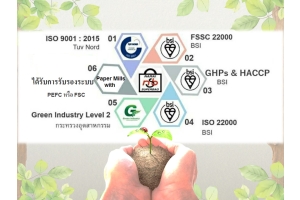Biological VS Way Seminar

Biological degradation. (Biodegradable), which can be called artificial degradation. It is the degradation of material that is degraded by fungi, bacteria or other biological processes. This is a process of nature that proceeds with its course and breakdown of material to its constituent parts. which are products from plants, animals or natural minerals However, these materials will break down at a rate. And the duration is different depending on the substrate.
So why did NSB choose this type of printing?
Organic degradation. (Compostable), which can be called true degradation. It is the decomposition of materials that are broken down into their natural constituents in a compost environment. Since it is broken down into its natural constituents, it does not cause any harm to the environment. The decay process usually takes about 90 days.
What is the difference between these two decompositions? Although all compostable materials are biodegradable but biodegradable material (Biodegradable) Some types will not decompose 100% because they leave scrap metal behind. which those scrap metal It is still harmful to the ecosystem and the environment. It can also take several years to decompose and last longer than common objects of the same type. Without the right environmental factors Biodegradable materials, on the other hand, (Compostable) produces something called humus. full of nutrients and suitable for plants In summary, Compostable products are biodegradable. But there are additional benefits. That is, when they decompose, they release valuable nutrients into the soil, aiding in the growth of trees and plants.











